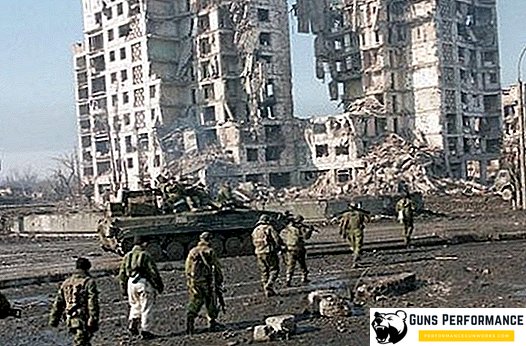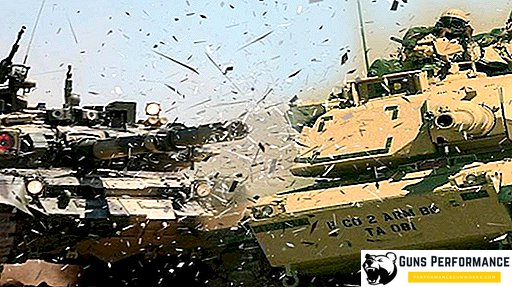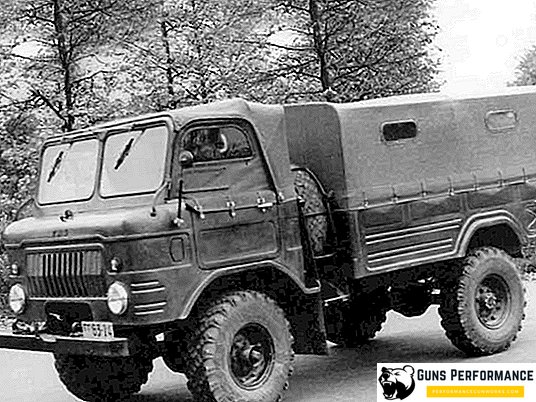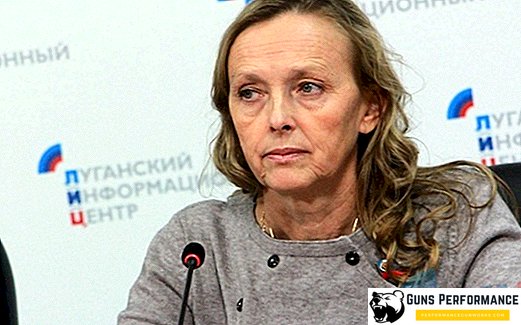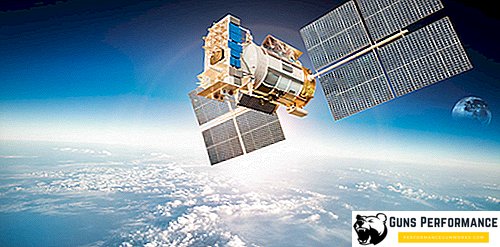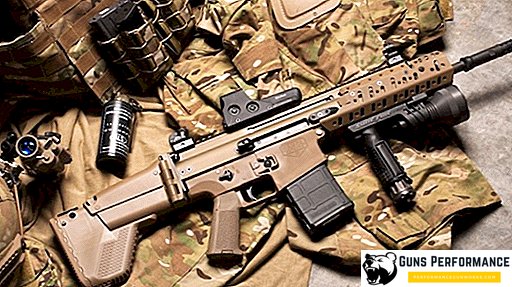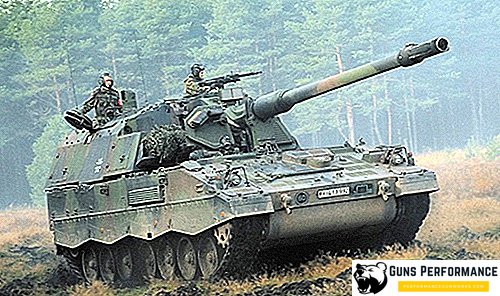The Republic of Uzbekistan is a state in Central Asia. The head of state is the president, which is enshrined in the constitution. The first president was appointed in 1990, when the Uzbek SSR existed. After independence, the position became known as the "President of the Republic of Uzbekistan".
Until 2003, the head of state possessed great powers, he was simultaneously the chairman of the cabinet of ministers. Thanks to the efforts of the opposition, in 2003 this provision was excluded.
Currently, President is Shavkat Mirziyoyev. The head of state can be elected an unlimited number of times for a seven-year term.
Formation of the Uzbek state before the conquest of the Arab Caliphate
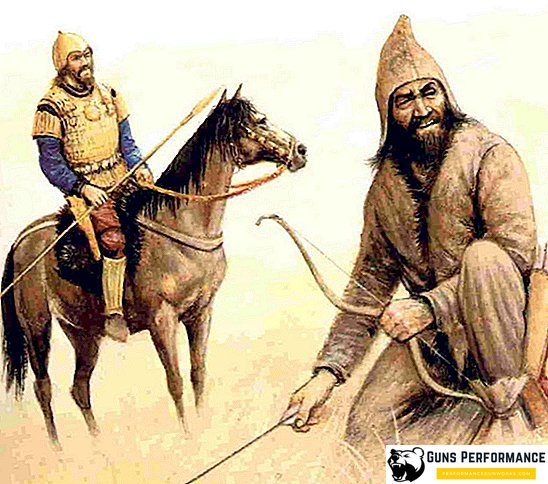
The first tribes on the territory of modern Uzbekistan appeared in the second millennium BC. They were nomads, often forming tribal alliances to capture new lands and repel aggression.
The most ancient states were formed in the first millennium BC, which is associated with the development of the Syrdarya, Amudarya and Zeravshan river basins and the development of irrigated agriculture. The main task of these states was the preservation of fertile land. In Central Asia before the Persian invasion, there were states:
- Bactria;
- Khorezm;
- Parthian kingdom;
- Sogd.
In the 6th century BC, most states seized the Persian kings from the Achaemenid dynasty. For about 200 years, they ruled in the territory of modern Uzbekistan, but in the 4th century BC in these lands came the army of Alexander of Macedon. After about 100 years, a new state appeared in Central Asia - the Greco-Bactrian kingdom.
In the II century BC. Macedonian rulers lost their influence, and they were expelled from the territories of Central Asia. For about a century, small states developed independently; subsequently, these lands were under foreign rule:
- At the end of I century BC. e. the territory of Uzbekistan was seized by the Kushan kingdom, created by nomadic tribes. The Kushan controlled most trade routes from China to the Middle East and Europe;
- In the 5th century AD, the state of Ephthalides arose, which managed to seize part of the territory of Uzbekistan;
- In the middle of the 6th century, the Ephtalides (or the White Huns) fell under the onslaught of the Türks, who created their kaganate;
- In the 8th century, the whole of Central Asia was ruled by the Arab Caliphate.
After the Arab invasion, the region underwent Islamization, the remnants of Greek culture were supplanted by the Arab civilization, trade with Asia was established, new cities were built.
Uzbekistan and its development until the end of the XVIII century

The Arab Caliphate contributed to the development of the region’s economy through trade and caravan control. The country was ruled by Arab governors, whose decrees were considered mandatory for the territory. In the 10th century, the dawn of Central Asia reached its peak, then the country was ruled by the Samanid dynasty. The capital was Bukhara, it was the center of the Muslim scholarly world. Thanks to the numerous reforms of the rulers, the standard of living of the local population was the highest in Asia. At the end of the 10th century, the wealth of the state attracted the attention of the Turkic nomads who seized part of the territories of modern Uzbekistan, which created the states:
- Gaznevidov;
- Karakhanids;
- Khorezm.
The latter developed more intensively than others and in the 12th century was able to subdue most of the region.
In the XIII century, Central Asia was subjected to a massive invasion of the hordes of Genghis Khan. The main goal of the Mongols was looting, so the local population was destroyed, and the cities were destroyed. After the Mongol invasion, the region stopped its development for a long time. The territory of modern Uzbekistan came under the authority of one of Genghis Khan’s sons - Chagatai. He called his patrimony Chagatai ulus.
During the reign of Tamerlane (second half of the XIV century), Central Asia experienced another stage of economic growth:
- Caravan routes were restored;
- Samarkand became the capital of the Timurid state;
- Destroyed cities rebuilt.
In the XV century, the state of Timur was divided into two parts, the heirs of the great ruler could not keep the country united.
At the end of the 15th century, the fragmented princedoms fell under the pressure of the last in the history of the conquerors of Uzbekistan - the nomadic tribes of Sheibanids. Until the beginning of the XIX century, the country was ruled by nomads who completed the process of forming the Uzbek nation.
Uzbekistan under the control of the Russian Empire

In the 18th century, Russia took control of the Kazakh zhuzes and in the south of its territories bordered with three states of Central Asia:
- Kokandan Khanate;
- Khiva Khanate;
- Bukhara Emirate.
From the second half of the XIX century, Central Asia became a strategic object for the Russian Empire and England. In an effort to assert its superiority, Russia in the early 1860s conducted a military campaign against the Kokand Khanate. Tsar's troops were lucky:
- In 1862, the city of Pishpek (modern Bishkek) was captured;
- In 1864, Russian troops occupied the cities of Chimkent and Turkestan (in the south of modern Kazakhstan);
- In 1864, Tashkent fell after a three-day siege;
- In 1866, the Bukhara Emirate lost part of their territories.
In 1868, the Russian Empire concluded a peace treaty with the Emirates of Bukhara. According to its conditions, Russia received a part of the emirate’s territories and a number of large cities.
Immediately after the appearance of the Russian Empire in the region, the economic situation changed: accelerated industrialization began, the stakes were made on the cultivation and processing of cotton.
Russian policy towards the territories of Uzbekistan was notable for flexibility:
- Reforms were limited;
- Local government retained internal autonomy;
- The system of collecting taxes was unified.
Despite this, Russian authorities often “exaggerated” on the ground. Local Muslims perceived the Russian Empire as an invader, uprisings and riots often occurred. The most famous insurrections were the cholera riot of 1892 and the Andijan uprising of 1898, which grew into a "holy war".
After the February Revolution of 1917, Soviets of Workers 'and Soldiers' Deputies appeared in the country. They represented the interests of the Bolsheviks metropolis. In April, the power passed to the local Provisional Government, but the Bolsheviks almost immediately came into conflict with the new authority. Against the Bolsheviks rallied:
- Local aristocracy;
- Nationalists;
- Military royal army;
- Intelligentsia.
Britain supplied the adherents of the interim government with weapons and military equipment. Resistance to the Bolsheviks in Uzbekistan lasted until 1920, but individual detachments of the White Guards and Basmachs fought a partisan struggle almost until the beginning of the Great Patriotic War.
Uzbekistan as part of the USSR and after independence

In October 1924, the Uzbek Soviet Socialist Republic was established. Its structure includes:
- Fergana region;
- Syrdarya region;
- Samarkand region;
- Part of the Khorezm NDS;
- Part of the Bukhara NDS.
Until 1929, the Tajik SSR was part of Uzbekistan.
The period from 1924 to 1930s is characterized by the collectivization and industrialization of Uzbekistan. The struggle against the "fists" was going on throughout the republic, the class of workers and employees expanded, schools and special educational institutions were built in the country. In Uzbekistan, new cotton plantations were established. In the second half of the 1930s, a wave of repression swept the country. Many representatives of the local intelligentsia were shot. At the beginning of the Great Patriotic War, about 100 large industrial enterprises, more than a million citizens from the battlefield were evacuated to Uzbekistan. The Soviet republic worked on the front. After the war, the industrialization of the region resumed.
The second half of the 1980s became a landmark for the Uzbek SSR — restructuring began in the Soviet Union. In 1988, the Birlik popular movement was formed in the country, accusing the Soviet leadership of a number of crimes against the Uzbek nation. In 1990, they elected the first president of the Uzbek SSR, Islam Karimov. December 8, 1992 the Constitution was adopted. Karimov was re-elected for several consecutive terms, the last elections were held in 2015. In 2016, the president died, his successor was Shavkat Merziyoyev.
How to become the president of Uzbekistan?

After the death of Karimov, the requirements for presidential candidates of Uzbekistan have changed:
- The minimum age of a candidate is 35 years;
- Must be a citizen of the Republic of Uzbekistan;
- Own the national language;
- Constantly residing in the territory of Uzbekistan for at least 10 years.
At present, the possibility of electing the president for more than two terms is excluded from the constitution. For some citizens the way to candidates is closed:
- Convicted for various intentional crimes;
- Persecuted by law on criminal cases against them;
- All official ministers of religious institutions.
Different parties may nominate candidates for the presidency. To do this, the party must register with the Ministry of Justice no later than 6 months before the start of the election campaign. Citizens of the republic have the right to self-nominate: it is enough to assemble an initiative group of voters of at least 300 people.
The procedure for nominating candidates for the presidency of the Republic of Uzbekistan includes filing documents no earlier than 65 days before the beginning of the elections, and no later than 45 days. Candidates are nominated by political parties or an initiative group of voters. Political parties can nominate both party and non-party candidates. The initiative group nominates only non-partisans.
The official entry into office takes place at the time of taking the oath at the meeting of the Oliy Majlis no later than 2 months after the announcement of the election results.
Status and duties of the President of Uzbekistan

Presidential orders do not have the force of legislation. The head of the republic has a number of responsibilities:
- Is the guarantor of the constitution, respect for the rights and freedoms of the Republic of Uzbekistan;
- It takes a set of necessary measures to protect the territorial integrity, sovereignty and security of the state;
- Deals with issues of national statehood;
- He is the official representative of Uzbekistan in the international arena and within the state;
- Negotiates and signs all documents relating to the republic, acts as a guarantor of their execution and compliance with all conditions;
- Accepts various diplomas awarded by diplomatic representatives of other countries;
- Provides the Senate with a list of candidates for diplomatic posts in embassies of foreign countries;
- May seek assistance from the Senate in all matters of foreign and domestic policy that are important to the state;
- Undertakes to form a government, to govern it;
- Ensures the interaction of the highest authorities in the country, controls their work;
- Forms and abolishes ministries. Undertakes to submit appropriate decrees for approval by the Senate;
- Chooses a candidate for the position of the Chairman of the Senate, submits it to the Oliy Majlis for approval
- Provides the Senate for consideration and approval of the candidacy of the Prime Minister;
- Approves the members of the Cabinet of Ministers presented to him by the Prime Minister;
- Appoints the position of the Prosecutor General of the country, has the right to remove him from office. This is done only after approval by the Senate;
- Approves and removes from a post judges of a various level, beginning from the Constitutional court, finishing city courts;
- Appoints and dismisses hokims (heads of administration or mayors);
- Cancels and suspends acts of government;
- Signs all laws passed by the Senate. It has the right to impose its veto, returning the law with its additions and comments to the revision;
- Declares war on attacks on the Republic of Uzbekistan. In this case, the president is obliged to submit the decision for approval by the senate;
- Imposes a state of emergency in the country, in cases stipulated in the constitution. This may be an external threat, riots, large-scale natural disasters, and so on;
- He is the Supreme Commander of the Armed Forces of the Republic of Uzbekistan. He appoints and dismisses the highest command of the army. Gives the highest ranks. As an exception, for outstanding achievements, may confer extraordinary military ranks;
- Awards the distinguished military and civilians with medals, orders and certificates of honor. Has the right to confer honorary titles;
- Has the right to decide questions about the granting of citizenship. May provide political asylum in the Republic of Uzbekistan;
- Performs pardon of convicted persons, submits lists of persons subject to amnesty for consideration by the Senate;
- Engaged in the formation of the National Security Service of the Republic of Uzbekistan. Appoints the head of the service, after which the candidature is approved by the Senate;
- Has the right to exercise a number of other powers that do not contradict the country's constitution.
The head of Uzbekistan does not have the right to transfer his powers to other officials or state bodies.
Presidents of Uzbekistan and the residence of the head of state

The first president of the country was Islam Karimov (1990-2016). He was the first and last head of the Uzbek SSR from 1990 to 1991. In the early years of his rule, Karimov had to maneuver between the country's powerful political clans. The president was reelected for the post 5 times (if we count the post of president of the Uzbek SSR). In the early 1990s, the head of the republic conducted a large-scale struggle with the Islamists. Thanks to the support of Washington on the one hand, and Moscow on the other, Karimov managed to eliminate these movements.
December 14, 2016 was the inauguration of Shavkat Mirziyoyev, who is the president to this day. In the summer of 2017, Mirziyoyev carried out a massive purge of the prosecution authorities, dismissing all employees working under the previous head of state.
The main residence of the President of the Republic of Uzbekistan - "Aksaray", which translates as "White Palace". It is there that the president’s reception is located. The architecture of the building is reminiscent of traditional Turkic buildings and has a national flavor.
At present, the Republic of Uzbekistan is still a country with a low standard of living. However, President Shavkat Mirziyoyev promises to increase it in the coming years. Despite promises made by the head of state, residents of Uzbekistan cannot boast of high incomes.


